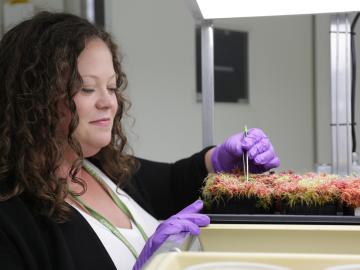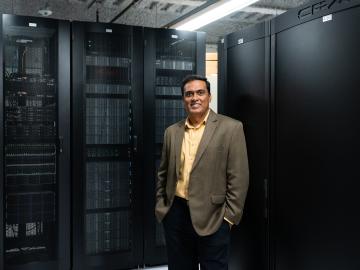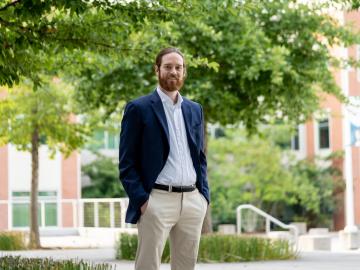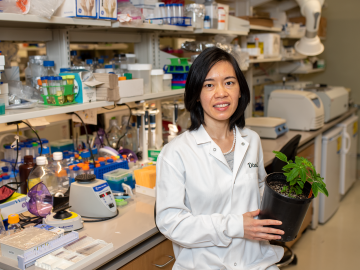
Filter News
Area of Research
- (-) Advanced Manufacturing (1)
- (-) Biology and Environment (65)
- (-) Materials (32)
- (-) National Security (6)
- (-) Nuclear Science and Technology (8)
- Biological Systems (1)
- Biology and Soft Matter (1)
- Computational Biology (1)
- Energy Science (39)
- Fusion and Fission (14)
- Fusion Energy (5)
- Isotopes (5)
- Materials for Computing (5)
- Neutron Science (19)
- Supercomputing (29)
News Type
News Topics
- (-) Biomedical (11)
- (-) Energy Storage (8)
- (-) Environment (65)
- (-) Fusion (8)
- (-) Materials Science (20)
- (-) Mercury (6)
- (-) Polymers (5)
- 3-D Printing/Advanced Manufacturing (10)
- Advanced Reactors (4)
- Artificial Intelligence (14)
- Big Data (11)
- Bioenergy (29)
- Biology (44)
- Biotechnology (7)
- Buildings (2)
- Chemical Sciences (11)
- Clean Water (10)
- Composites (3)
- Computer Science (25)
- Coronavirus (7)
- Cybersecurity (8)
- Exascale Computing (5)
- Frontier (3)
- Grid (5)
- High-Performance Computing (16)
- Hydropower (5)
- Isotopes (7)
- Machine Learning (12)
- Materials (23)
- Mathematics (3)
- Microscopy (13)
- Molten Salt (1)
- Nanotechnology (10)
- National Security (24)
- Neutron Science (13)
- Nuclear Energy (24)
- Partnerships (5)
- Physics (12)
- Quantum Computing (1)
- Quantum Science (1)
- Security (6)
- Simulation (9)
- Space Exploration (2)
- Summit (8)
- Transportation (4)
Media Contacts

Science has taken Melanie Mayes from Tennessee to the tropics, studying some of the most important ecosystems in the world.

As the United States moves toward more sustainable and renewable sources of energy, hydropower is expected to play a pivotal role in integrating more intermittent renewables like wind and solar to the electricity grid

Microorganisms may provide hope that peatlands can withstand hotter temperatures in a changing climate.

The Atmospheric Radiation Measurement Data Center is shepherding changes to its operations to make the treasure trove of data more easily available accessible and useful to scientists studying Earth’s climate.

Scientists develop environmental justice lens to identify neighborhoods vulnerable to climate change
A new capability to identify urban neighborhoods, down to the block and building level, that are most vulnerable to climate change could help ensure that mitigation and resilience programs reach the people who need them the most.

A team of researchers has developed a novel, machine learning–based technique to explore and identify relationships among medical concepts using electronic health record data across multiple healthcare providers.

A study led by researchers at ORNL could help make materials design as customizable as point-and-click.

Bryan Piatkowski, a Liane Russell Distinguished Fellow in the Biosciences Division at ORNL, is exploring the genetic pathways for traits such as stress tolerance in several plant species important for carbon sequestration

A team of researchers working within the Center for Bioenergy Innovation at ORNL has discovered a pathway to encourage a type of lignin formation in plants that could make the processing of crops grown for products such as sustainable jet fuels easier and less costly.

Surrounded by the mountains of landlocked Tennessee, Oak Ridge National Laboratory’s Teri O’Meara is focused on understanding the future of the vitally important ecosystems lining the nation’s coasts.


